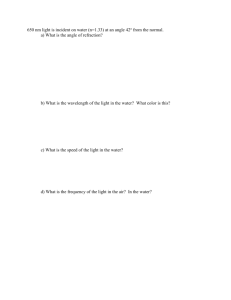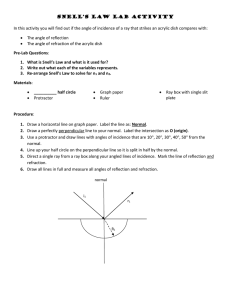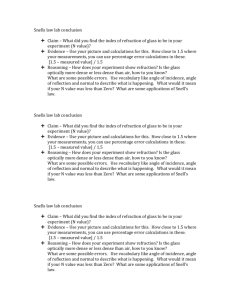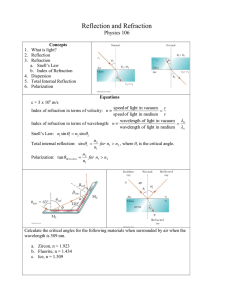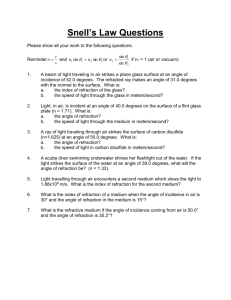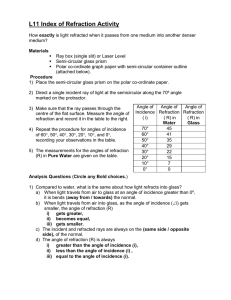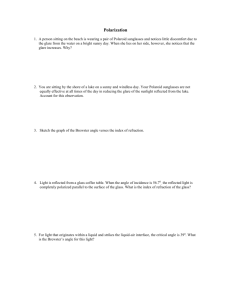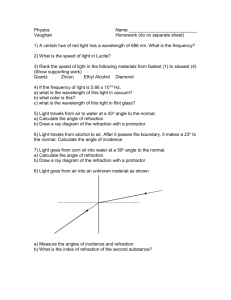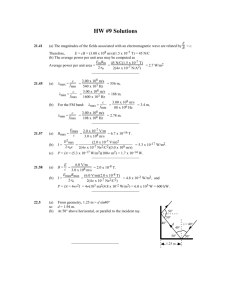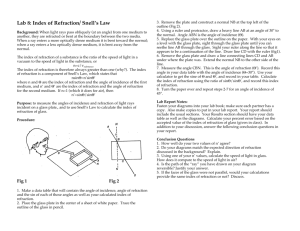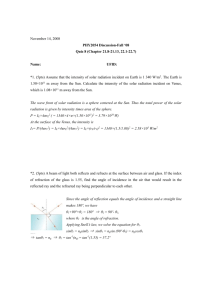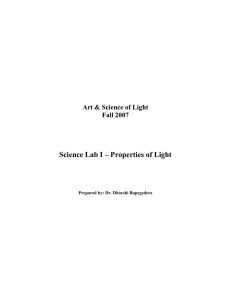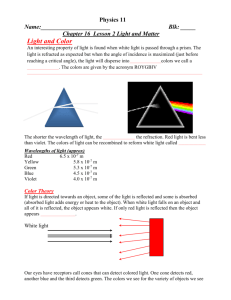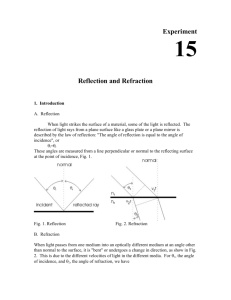Optics Homework 1
advertisement
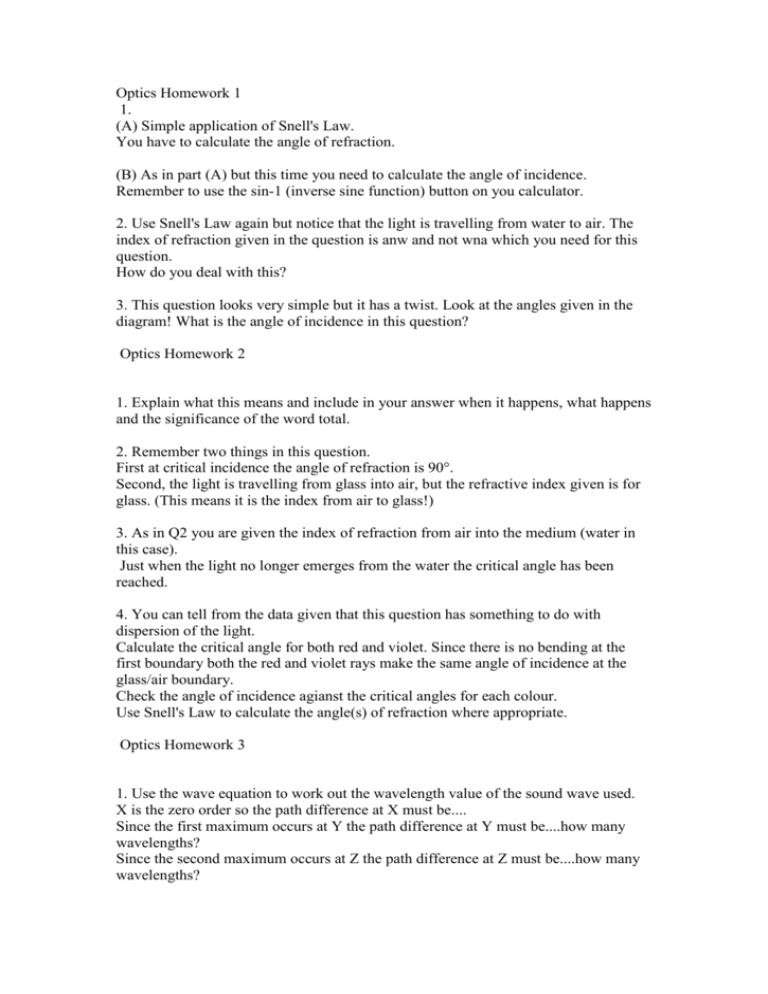
Optics Homework 1 1. (A) Simple application of Snell's Law. You have to calculate the angle of refraction. (B) As in part (A) but this time you need to calculate the angle of incidence. Remember to use the sin-1 (inverse sine function) button on you calculator. 2. Use Snell's Law again but notice that the light is travelling from water to air. The index of refraction given in the question is anw and not wna which you need for this question. How do you deal with this? 3. This question looks very simple but it has a twist. Look at the angles given in the diagram! What is the angle of incidence in this question? Optics Homework 2 1. Explain what this means and include in your answer when it happens, what happens and the significance of the word total. 2. Remember two things in this question. First at critical incidence the angle of refraction is 90°. Second, the light is travelling from glass into air, but the refractive index given is for glass. (This means it is the index from air to glass!) 3. As in Q2 you are given the index of refraction from air into the medium (water in this case). Just when the light no longer emerges from the water the critical angle has been reached. 4. You can tell from the data given that this question has something to do with dispersion of the light. Calculate the critical angle for both red and violet. Since there is no bending at the first boundary both the red and violet rays make the same angle of incidence at the glass/air boundary. Check the angle of incidence agianst the critical angles for each colour. Use Snell's Law to calculate the angle(s) of refraction where appropriate. Optics Homework 3 1. Use the wave equation to work out the wavelength value of the sound wave used. X is the zero order so the path difference at X must be.... Since the first maximum occurs at Y the path difference at Y must be....how many wavelengths? Since the second maximum occurs at Z the path difference at Z must be....how many wavelengths? 2. In this question we are dealing with minima in the interference pattern. What is the condition for a minimum to occur? This tells you the path difference at A and B in terms of the wavelength. Since you know the wavelength of the microwaves you can work out the actual value of the path difference at B. Since you already know the distance from X to B, it is a simple matter to work out the distance from Y to B. 3. You know the maximum is second order. This tells you the value of n. There are 500 lines per mm so you can work out d, the distance between the slits. You will need to convert this to metres though. You are also given the wavelength in nm (1nm = 10-9 m), so you can now calculate the angle.




